Text
Lorenzo Langstroth unvarnished

Lorenzo Langstroth, 1890. From Langstroth on the hive & honey bee, rev. by Dadant. 1892.
December 25th, Christmas Day, is a day for sharing and giving. It also happens to be the birthday of a man known as the father of American beekeeping: Lorenzo Langstroth, born Philadelphia, Pennsylvania in 1810. With both happy occasions in mind, Mann Library is pleased to announce a resource that we’re pretty sure students of beekeeping and its history will find a wonderful gift: a fully digitized, searchable copy of Langstroth’s handwritten personal journal. Where a researcher would have once had to make an in-person trip to our special collections reading room to attempt a deciphering of Langstroth’s (infamously difficult to read) handwriting, the journal is now freely available (and actually readable!) as both a digitized version of the original work and in a transcribed form as part of the online Biodiversity Heritage Library.
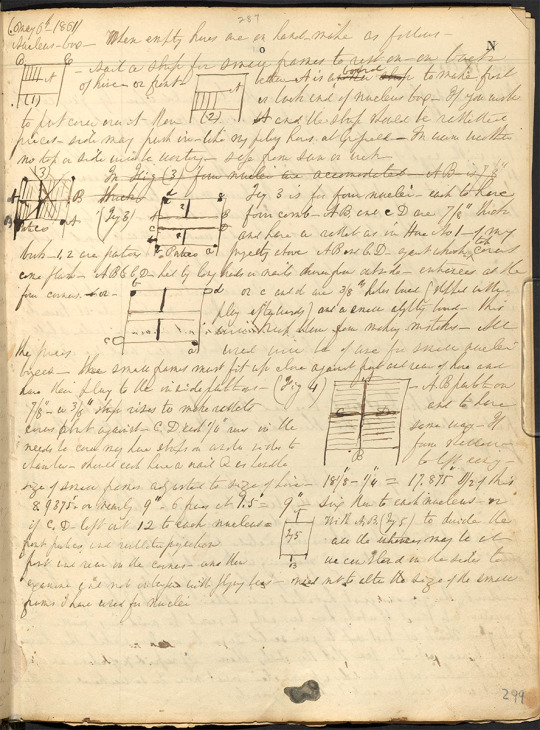
Page from "Journal on matters relating to bees, etc.," unpublished manuscript, Lorenzo Langstroth 1852-1895. in the special collections of Albert R. Mann Library, Cornell University.
For those not yet fully in the know, Lorenzo Langstroth looms large in American beekeeping history thanks to discoveries and inventions he made as a self-taught apiarist, innovations which essentially revolutionized the 19th century practice of beekeeping in North America and facilitated its development into the profitable industry of today. His guide on beekeeping, The Hive and the Honeybee, was first published in 1853 and remains in print even today. Langstroth’s story is also poignantly notable for a reason that you don’t have to a be a beekeeper to appreciate deeply: his struggles with debilitating depression, which stymied many of his professional endeavors. While working intermittently as a pastor and teacher when his mental health allowed, Langstroth found constant, life-affirming inspiration in the bee world he observed closely through the prism of the hives he kept for most of his adult life.
The history of beekeeping stretches back to prehistoric times, but when Langstroth patented his movable frame beehive in 1852 it created a worldwide revolution in the practice of keeping bees. On this page of his journal, we see the exact moment—the “aha” moment—that Langstroth landed on his brilliant insight: the significance of applying the concept of "beespace" to design hives that allow easier harvesting of honey than possible in earlier hive structures. The rest, as they say, is history.
The journal Langstroth kept is a treasure for several reasons. It provides fascinating insight into pivotal moments of beekeeping’s technological history. It is, as well, an intimate view of resilience in face of sometimes devastating mental health challenges. And last but really not least, in the comments and pet peeves that Langstroth also recorded in his ongoing notes-to-self, his off-the-record writing offers a more mundane but no less instructive tour through the day-to-day concerns—from keeping bee hives productive to the vexing challenges of protecting trade secrets and securing patents for promising new discoveries in a timely way—that would have been top-of-mind for any aspiring agricultural entrepreneur of the 19th century.
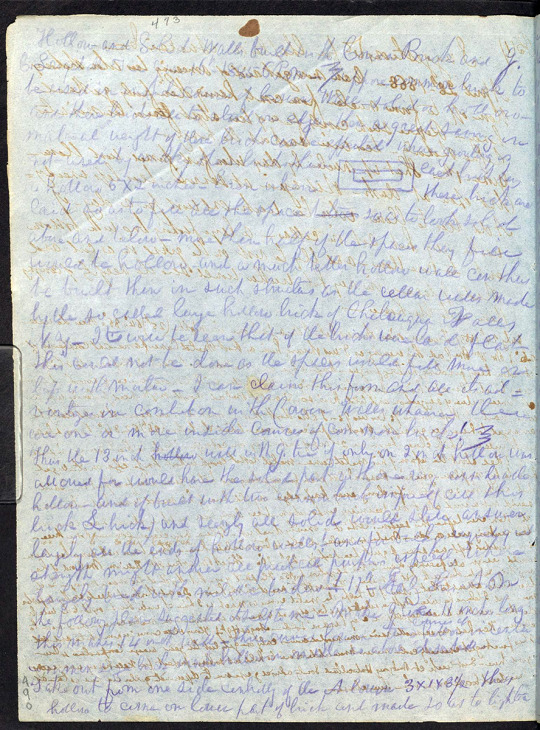
Page from "Journal on matters relating to bees, etc.," unpublished manuscript, Lorenzo Langstroth 1852-1895. in the special collections of Albert R. Mann Library, Cornell University.
The online availability of Langstroth’s journal in both its handwritten and transcribed form has been a work very long in the making. When early 20th century entomologist Everett Franklin Phillipps joined the Cornell faculty 1924, he made it his mission to establish one of the world’s most important collections of beekeeping materials—now known as the E. F. Phillips Collection at Mann Library. Recognizing the importance of one of this collections’ gems—the Langstroth journal—for the beekeeping field, Phillips began the painstaking process of transcribing 600 pages of its cramped, highly slanted script—rendered even more illegible by the frequent ink bleed-through from other pages—into easily readable typescript. The project remained unfinished at the time of Phillips passing in 1951, and others took up the work intermittently over the following decades. But it wasn’t until the epic pandemic-era national lockdown of 2020 that intrepid collections specialist Betsy Elswit finally found herself with the time needed to finish transcribing of the journal's final 200 pages. Thanks to this heroic work, a browse through the work on the Biodiversity Diversity Heritage Library today provides a look at Langstroth’s original writing with a side-by-side view of transcribed, machine-readable text. Thank you Betsy! And thank you, Reverend Langstroth, for persevering through the inspirational highs and deep lows of life to impact the practice of beekeeping so profoundly, and to leave us such a rich record of such remarkable scientific observation and personal achievement.
And with that, we leave you with our best wishes for a good, hope-filled winter holiday season!
#Langstroth#beekeeping#beekeeper#apiculture#mann library#cornell university#rare books#vintage book#archives#mental health#agricultural history#special collections#bees#honey#apiary#honey bees
11 notes
·
View notes
Text
Mend and Make New
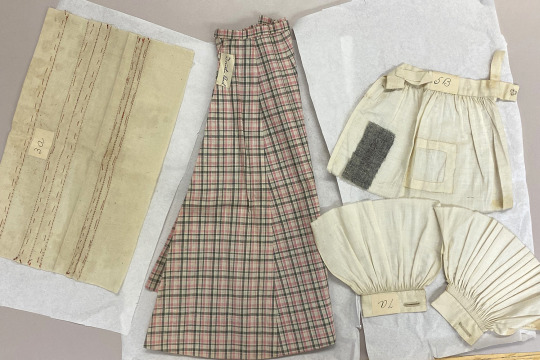


Featured in the photographs above is some remarkable hand and sewing-machine stitching done in 1893 by Dorothea Beach, a 6th grader at a public school in Cambridge, Massachusetts. The sample is from the archives of the American Association of Family and Consumer Sciences housed at Cornell University Library’s Division of Rare and Manuscript Collections.


Above: Title page, Lake Placid Conference of Home Economics Proceedings; photo of Flora Rose (l) and Martha van Rensselaer (r) at a League of Women Voters meeting, Hyde Park, NY, 1920 (from Human Ecology Historical Photographs
The AAFCS was founded as the American Home Economics Association at the Lake Placid Conference of 1909. Participants at the annual conference, who had been meeting annually for 10 years, were passionate about turning the formerly invisible work of women into vibrant arenas for building creative expertise. For the early pioneers of the field, Cornell’s Martha Van Rensselaer and Flora Rose among them, home economics (also known as domestic science and, later, family and consumer sciences) would be a force for liberation. As a newly emerging field of study in land-grant colleges and other educational institutions, it would help women transform practical skills into creative capacity for finding innovative solutions problems that affect both individuals and society as a whole. A key area for this work was the challenge women faced keeping themselves and their families well clothed, despite the hardships of poverty and crises in the national economy.
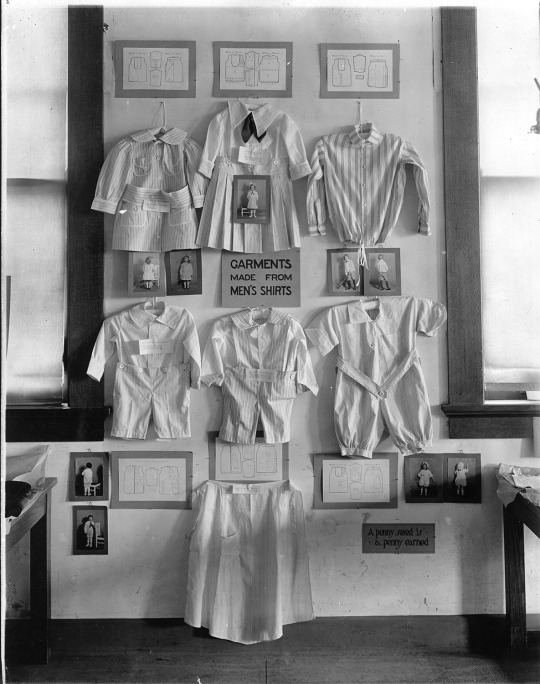

Above from top: Display of garments made from men's shirts arranged by Cornell home economics faculty for Farmers Week, 1919; Display of conserved hats prepared for an exhibit at the New York State Fair, 1918.(Both photos from the Human Ecology Historical Photographs collection).
Through community workshops, live demonstrations at county fairs, and free publications, home economists have sought over the years to help their communities take on the issue of making, maintaining, and repurposing clothing. Teaching children good stitch work was an important start, but the ultimate goal was to grow this basic skill into a nimble ability to refashion unlikely resources, lean household budgets and thread bare clothes included, into fresh elements of a pleasing wardrobe.


“Keeping Clothes Wearable”, by Gladys L. Butt. Cornell Extension Bulletin 536, October 1942, in the archives of the Cornell Rare and Manuscript Collections at Cornell University; also viewable online.

“Mending Clothes and Household Fabrics,” by Gladys L. Butt. Cornell Extension Bulletin 871, 1954; in the archives of the Cornell Rare and Manuscript Collections at Cornell University; also viewable online.


“First Lessons in Sewing: A Manual for Junior Extension Workers in Clothing,” Cornell Junior Extension Bulletin No. 1, 1918, in the archives of the Cornell Rare and Manuscript Collections at Cornell University; also viewable online.
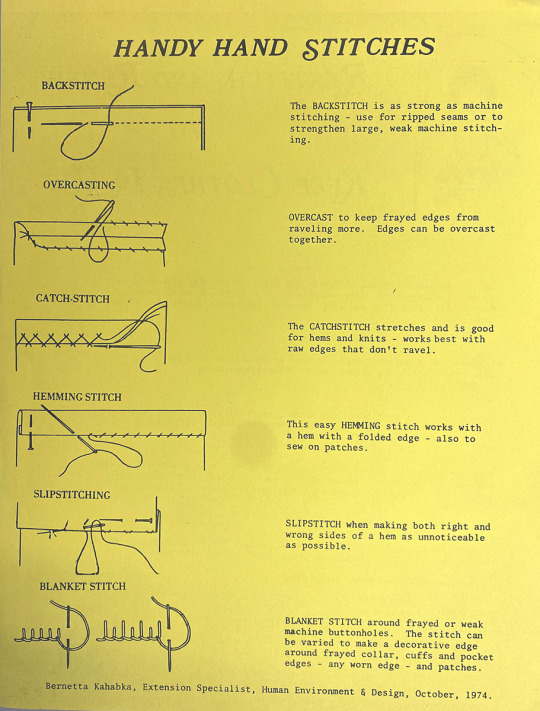
Page from the handout “Restitch and Renew to Keep Clothes in Use,” by Bernetta Kahabka, Extension Specialist, Cornell University, 1974, in the home economics archives of the Rare and Manuscript Division of Cornell University Library.
Most of the guides to sewing and stitching shown here are available as part of Mann Library’s online Home Economics Archive: Research, Tradition, History (HEARTH) , the Cornell Historical Literature of Agriculture (CHLA), and the Hathi Trust Digital Library. These online repositories offer valuable (yet free!) resources for anyone interested in re-learning the art of making new from old. “Upcycling,” a term first coined in the early 1990s, has become a common word as awareness of more sustainable “slow fashion” principles has grown. What does it mean exactly? According to merriam-webster.com, to upcycle is “to recycle (something) in such a way that the resulting product is of a higher value than the original item : to create an object of greater value from (a discarded object of lesser value).” For (happily) growing numbers of us, upcycling has become a fine craft that combines old traditions and techniques with contemporary style to create uniquely personalized wearable art that also signals a conscious effort to avoid harmful waste and use resources sustainably. With a little bit of mindfulness and maybe some handy “how-to’s found in digitized, freely available historical materials, the old can indeed become some bright new for one and all.
Excerpted from Mann Library’s spring 2023 exhibit, Sustaining Style: Towards Responsible Fashion

Display in Mann Library exhibit, Sustaining Style:Towards Responsible Fashion (March 23 - September 15, 2023)
16 notes
·
View notes
Photo
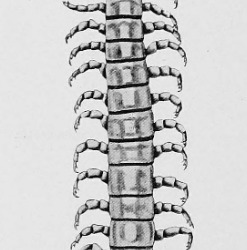
Scolopendra illustration from A text-book of zoology. 1910. Thomas Jeffery Parker. https://newcatalog.library.cornell.edu/catalog/1226995
#scolopendra#bug#insect#worm#millipede#centipede#scientific illustration#biology#bugs#entomology#zoology#life science#big bug#bug legs#bug drawing#bug illustration
18 notes
·
View notes
Photo
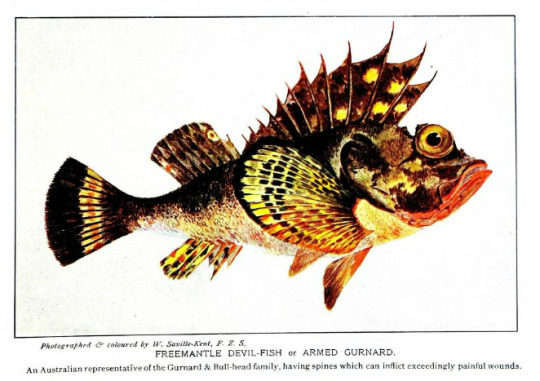
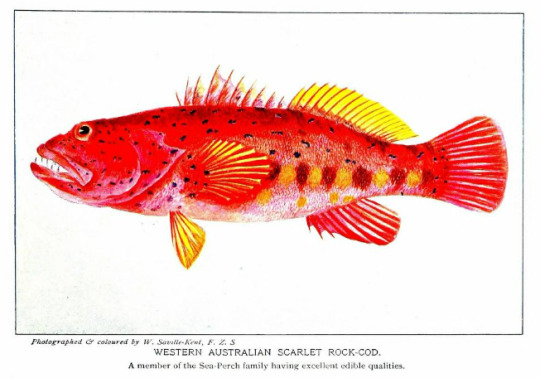
A Freemantle Devil-Fish or Armed Gurnard and a Western Australian Scarlet Rock-Cod taken from: The living animals of the world; a popular natural history with one thousand illustrations. 1902. Charles Cornish. Photographed and colored by W. Saville-Kent. https://newcatalog.library.cornell.edu/catalog/4090787
#fish#fishery#australia#australia wildlife#fishing#fish illustration#Vintage Science#science textbook#vintage textbook#zoology#water#scarlet rock-cod#armed gurnard#colorful fish#biology#life science
11 notes
·
View notes
Photo
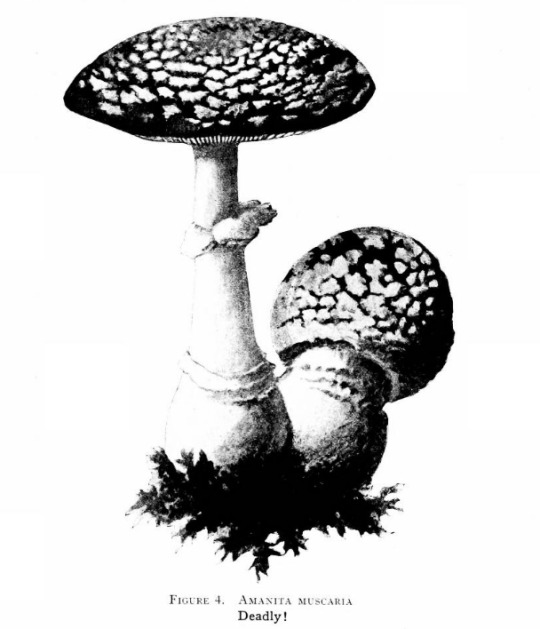
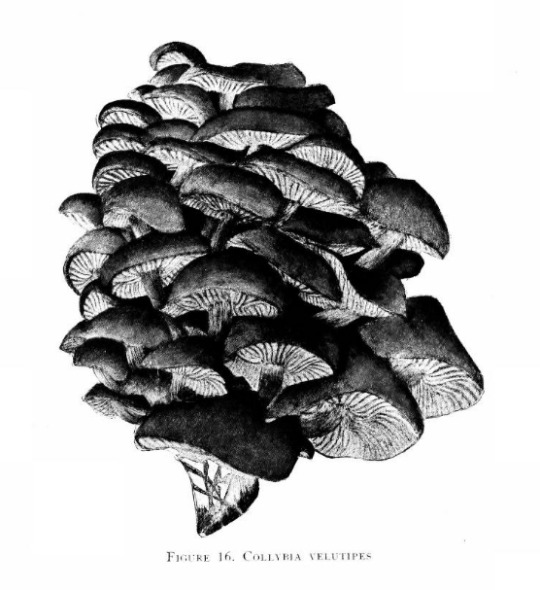
Mushroom images taken from, Minnesota mushrooms: Minnesota Plant Studies. 1910. Geological and Natural History Survey of Minnesota Frederic E. Clements, State Botanist. https://newcatalog.library.cornell.edu/catalog/170800
#mushrooms#mushroom#mycology#mycelium#botany#botanist#botany drawing#botany illustration#textbook illustration#vintage textbook#plant studies#plant science#poisonous plants#plants#plantlife#deadly#deadly mushrooms#poisonous fungi#poisonous mushrooms#Poison#amanita muscaria#collvbia velutipes#toxic#toxic plants
19 notes
·
View notes
Photo
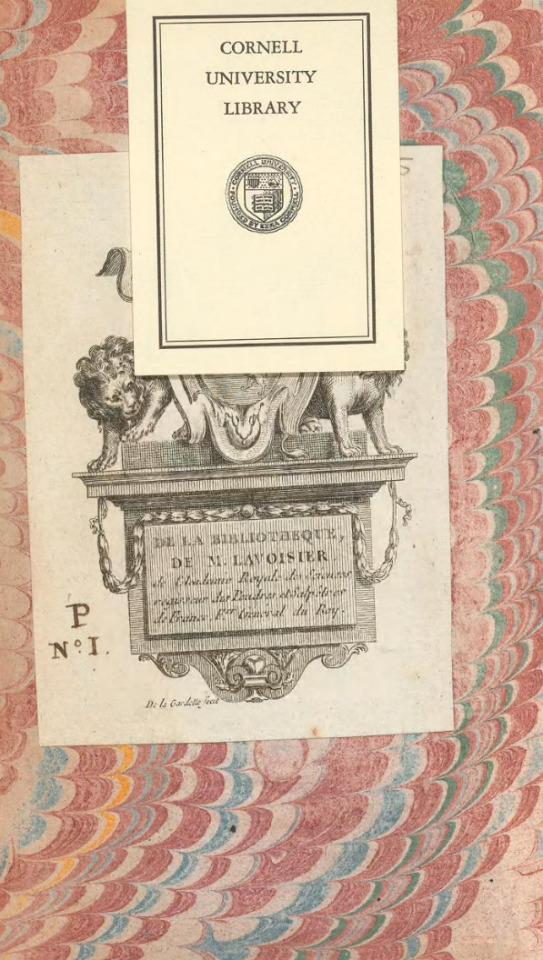
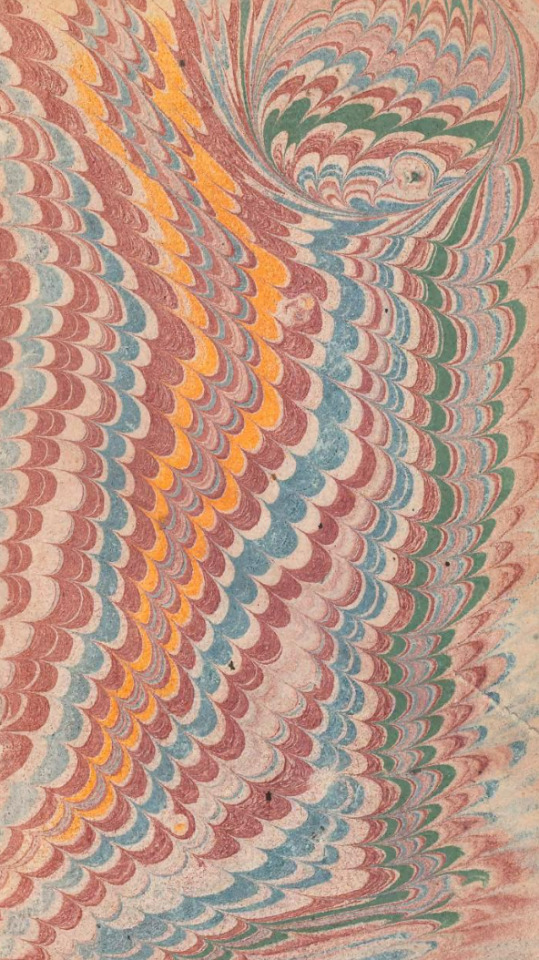
Cover pages from inside L'art de cultiver les pommiers, les poiriers, et de faire des cidres, selon l'usage de la Normandie. Louis Chambray. 1765. https://newcatalog.library.cornell.edu/catalog/2724750
#cornell#cornell university#Cornell University Library#cover page#title page#old book#vintage book#1700's book#rare book#rare books#bibliophile#fruit#textbook#vintage textbook#graphic design#art#bookmaking#book binding#book cover#vintage book cover#paper art#marble#marbled#marbled endsheets#endsheet#end sheet
6 notes
·
View notes
Photo

Pear illustrations from Pomologia : dat is, beschryvingen en afbeeldingen van de beste soorten van appels en peeren, welke in Neder- en Hoog-Duitsland, Frankryk, Engelland en elders geagt zyn, en tot dien einde gecultiveert worden. Johann Hermann Knoop. 1758. https://newcatalog.library.cornell.edu/catalog/357585
#fruit#fruits#pear#pears#fruit culture#fruit illustration#fruit textbook#pear illustration#vintage textbook#vintage graphic#vintage illustration#1700's art#horticulture#botany#plant science#food science#food#pear tree#apples#pomologia#german book#german textbook
150 notes
·
View notes
Photo
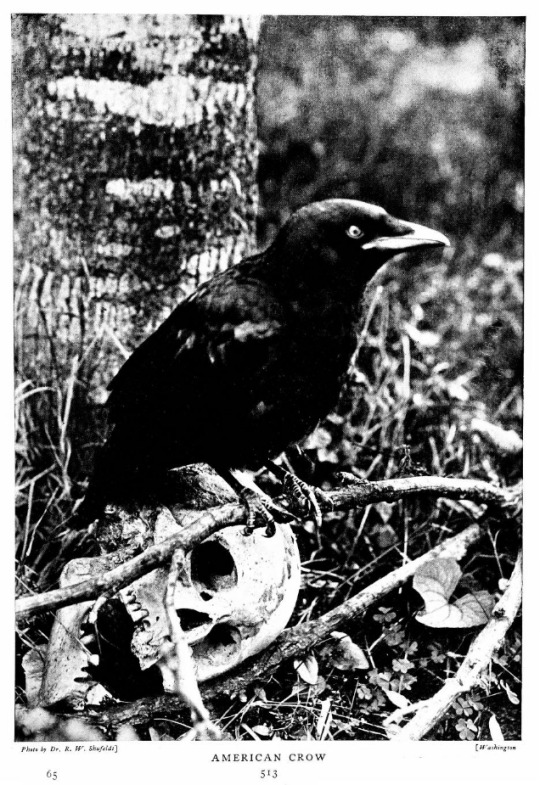
American crow photograph from The living animals of the world; a popular natural history with one thousand illustrations. Charles J. Cornish, F.C. Selous, Sir Harry Johnston, K.C.B., Sir Herbert Maxwell, F.R.S., and many other eminent naturalists. 1902. https://newcatalog.library.cornell.edu/catalog/4090787
#bird#birds#american crow#crow#crow bird#orinthology#birdwatching#bird illustration#bird photography#birding#zoology#biology#life science#science illustration#vintage illustration#vintage photography#vintage textbook#textbook#halloween#black bird
141 notes
·
View notes
Photo
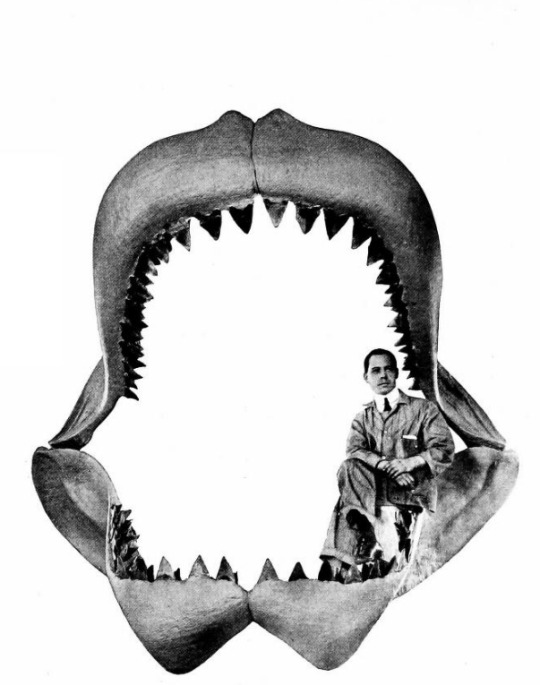

Jaws of the giant fossil shark and a stuffed picture of “Dinichthys a Devonian Fish” from Animals of the Past: An Account of Some of the Creatures of the Ancient World. Frederic Lucas. 1922. https://newcatalog.library.cornell.edu/catalog/12112918
#jaws#jaw bone#shark teeth#shark#fish#fishery#devonian fish#fishing#paleontology#animals#zoology#water#shark jaw#jaws of life#taxidermy#biology#skeleton#shark bones#fish teeth
32 notes
·
View notes
Photo


Bee illustration from The Bee People. Margaret Warner Morley. 1900. https://newcatalog.library.cornell.edu/catalog/1652539
#bees#honeybees#bee illustration#beekeeping#beekeeper#honey#beehive#bee nest#bee drawing#bee book#entomology
38 notes
·
View notes
Photo


Handwritten excerpts from L. L. Langstroth, the Father of American Beekeeping’s, journals on matter’s relating to bees, etc. begun Jan. 29th, 1852 in Philadelphia, Vol. 1- : manuscript 1852-1862. Currently held in our library’s Phillips Beekeeping Collection archive. https://newcatalog.library.cornell.edu/catalog/10018007
#handwriting#vintage journal#vintage handwriting#old handwriting#calligraphy#L.L. Langstroth#beekeeping#bees#bee#swarming#bee swarm#queen bee#honey#beekeeper#bee hive#beehive#entomology#entomologist#handwritten#handwritten journal#cursive#cursive handwriting#chaos#messy handwriting
13 notes
·
View notes
Photo
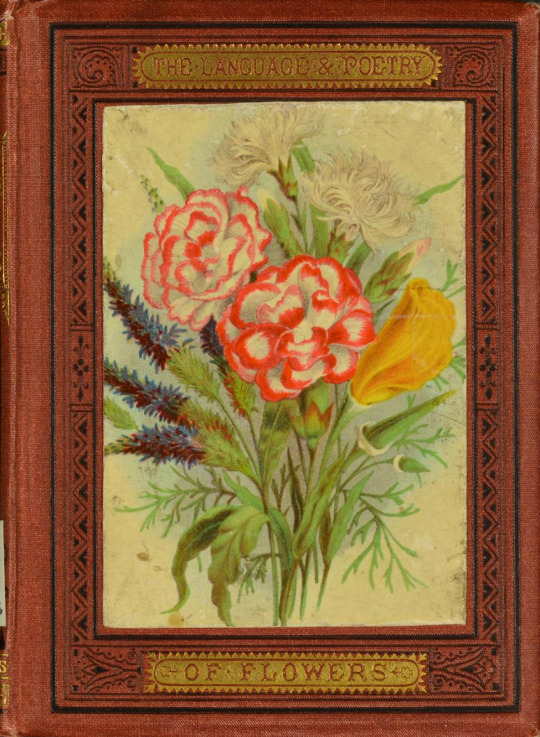


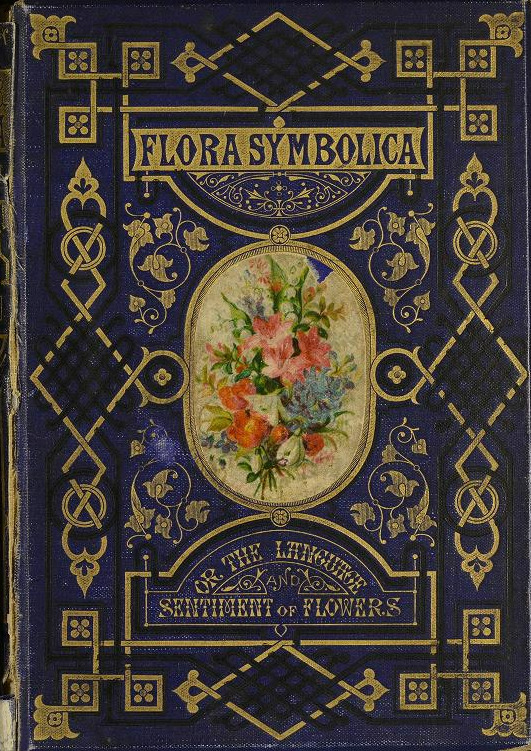
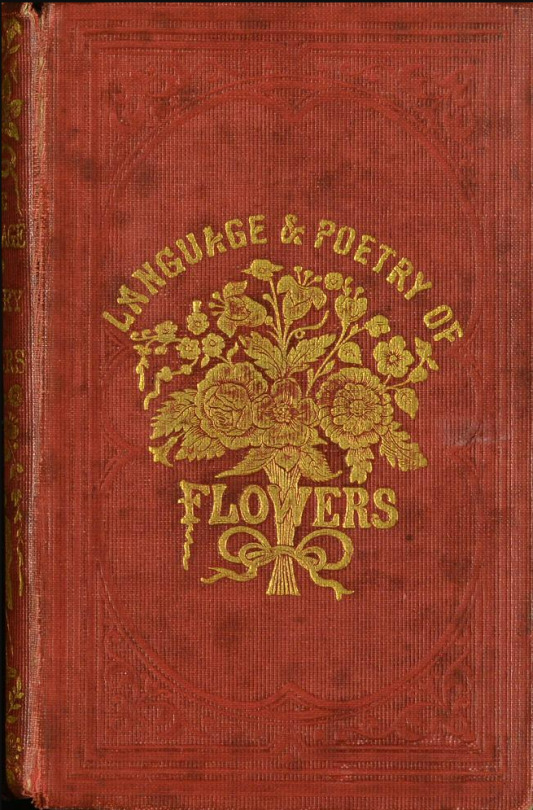
Various covers and editions of Language & Poetry of Flowers, first published in 1884. https://newcatalog.library.cornell.edu/catalog/13293566
#vintage#vintage books#vintage book cover#book covers#books#bibliophile#library#librarian#flowers#vintage flower#old books#flower books#cover art#graphic design#book cover art#language of flowers#language and poetry of flowers#poetry#horticulture#botany
96 notes
·
View notes
Photo

Olde Tan Harness advertisement from American Agriculturist’s February 23, 1924 edition. https://newcatalog.library.cornell.edu/catalog/11866235
#olde tan harness#horse#horse harness#animal harness#harness#vintage advertisement#vintage graphic#vintage graphic design#vintage ad#american agriculturist#agriculture#farming#farm
2 notes
·
View notes
Photo
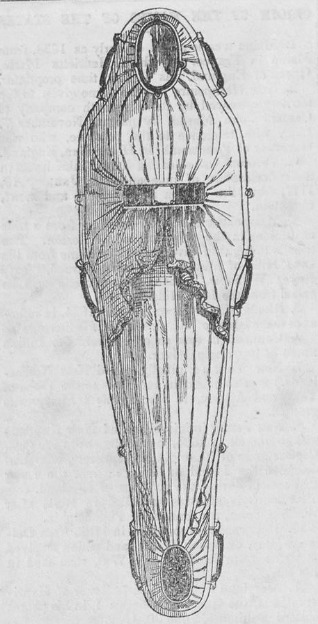
Sarcophagus or metal burial casket made by Messrs. Fisk & Raymond of New York, shown off at the New York State Fair in Syracuse, NY. Rural New Yorker. March 7, 1850. https://newcatalog.library.cornell.edu/catalog/1043101
#sarcophagus#casket#burial#burial casket#funeral#metal casket#The Rural New Yorker#new york#new york state fair#Syracuse#funeral arrangements#coffin#fair
105 notes
·
View notes
Photo

Campbell’s soup advertisement from the November 1925 issue of The Delineator. R. S. O'Loughlin. https://newcatalog.library.cornell.edu/catalog/1891092
#vintage ad#vintage advertisement#vintage advertising#vintage illustration#vintage graphic#graphic design#communication#advertising#1920's ad#Delineator#the delineator#women's magazine#tomato#pop art#andy warhol#tomato soup can#campbell's soup
13 notes
·
View notes
Photo

Example of the font/lettering style “Goudy Modern,” from Elements of lettering. Frederic W. Goudy. 1922. https://newcatalog.library.cornell.edu/catalog/2051576
#typography#typoart#goudy#goudy modern#modern font#fonts#font#example font#lettering#elements of lettering#letter#examples of lettering#Frederic Goudy#bold font#vintage font#design#graphic design
3 notes
·
View notes
Photo

Size of the planets from Astronomy for students and general readers. Simon Newcomb. 1880. https://newcatalog.library.cornell.edu/catalog/5431970
#astronomy#space#planets#solar system#space graphic#space illustration#planet illustration#saturn#neptune#jupiter#mercury#mars#venus#earth#uranus#sizes of the planets#simon newcomb#science#atmosphere#stars
11 notes
·
View notes